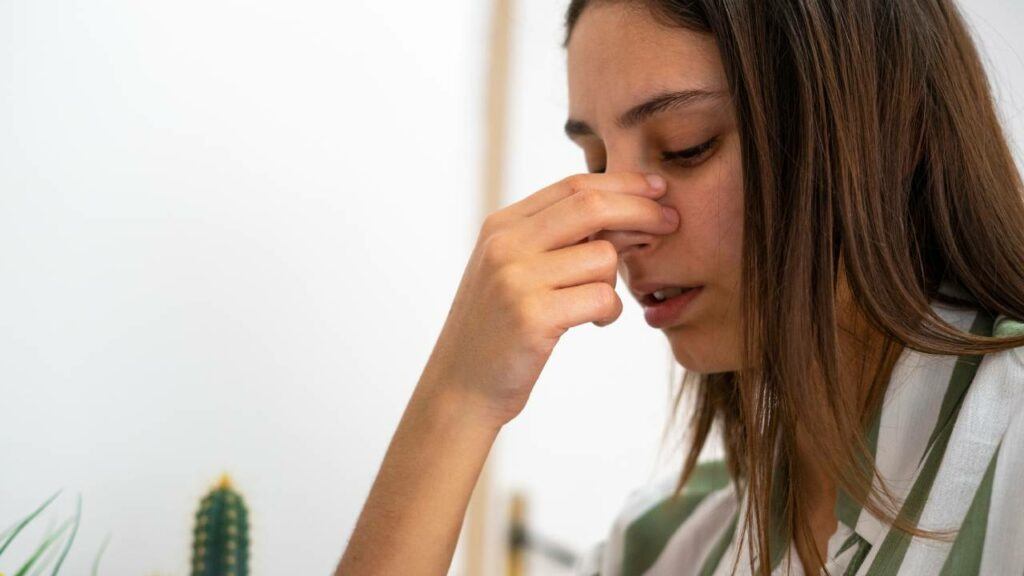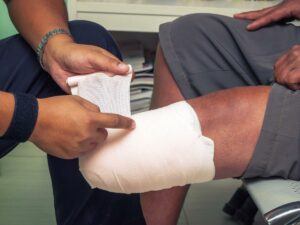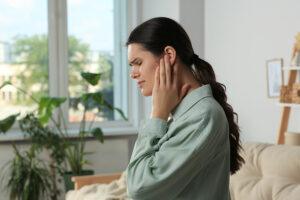The Vital Facts
- Nosebleeds can occur when the blood vessels or the lining of the nose become damaged. While experiencing a nosebleed can be alarming, it typically does not result in a serious problem.
- Approximately 10% of people will experience a nosebleed at some point in their lives.
- Epistaxis, or nosebleeds, can occur in any age group but are more prevalent in the elderly (50–80 years old) and children (2–10 years old).
Picture this: you’re walking along the park with your children and suddenly, you see blood flowing from one of their noses.
What do you do? What’s the first aid for nosebleeds?
Because of the position of the nose and the number of blood vessels, nosebleeds are common enough that about 10% of people will experience them at least once in their lifetime.
While most nosebleeds can be managed quite easily, it still helps to understand what their causes are, what you can do to prevent them and what you need to do in case you, or someone you know, gets a nosebleed.
Follow these steps for immediate first aid response to nosebleeds:
- Keep calm
- Let the patient sit up straight
- Pinch the soft parts of the nose firmly for 10 minutes
- Loose tight clothing around the neck
- Place a cold cloth around the neck
- Release pressure after 10 minutes and check the bleeding
- If nosebleed persists, seek medical attention
- If the patient has other symptoms, e.g. headache, seek medical attention immediately
For a more detailed first aid guide to nosebleeds, click here.
Continue reading as we discuss everything you need to know about first aid for nosebleeds.
Explore this article:
- What are nosebleeds?
- What causes nosebleeds?
- What are the symptoms of nosebleeds?
- First aid for nosebleeds
- How to prevent nosebleeds
What are nosebleeds?
Nosebleeds (medical name: epistaxis) happen when the blood vessels inside the nose bursts. Infection, injury and allergic reactions typically cause nosebleeds. While they are common, it helps to learn about first aid for nosebleeds, so you know how to respond the next time it happens to you or someone you know.
What causes nosebleeds?
The rich supply of blood transported by the vessels in our noses sit close to the surface, which makes it easy for them to break and bleed. Nosebleeds are typically observed in one nostril at a time.
Because these blood vessels are fragile, they can rupture and cause nosebleeds due to any of the following factors:
- Infection of the nose lining
- Allergic reactions
- Bumps, falls and other similar incidents
- Objects pushed up the nostril
- Nose picking
- Air travel and altitude
- Low humidity
- Indoor heating during cold weather that dries nasal passages
It’s easy to recognise a nosebleed.
So, understanding these causes of nosebleeds will help you understand who is at risk of getting them and know just what to do. This knowledge also helps you be more prepared with first aid basics for emergencies by using first-aid kits.
What are the symptoms of nosebleeds?
The signs and symptoms of nosebleeds are:
- Bleeding from the nostrils,
- Urge to frequently swallow
- Feeling that there’s liquid flowing at the back of the throat
It is common for children to experience nosebleeds. This is typically not serious, and they tend to outgrow the condition. However, medical attention is still necessary if the nose bleeding gets severe. Nosebleeds are also common for adults over 65 years old, but they can often be managed easily at home.
First aid for nosebleeds
Here’s what you need to do in the event of a nosebleed:
- Keep calm, whether it’s you or someone you’re with who’s experiencing a nosebleed. If it’s a child, try to soothe and reassure them, since crying can increase blood flow.
- Let the person sit up straight with their head leaning slightly forward to prevent the flood from going back in through the sinuses and throat.
- Pinch the soft parts of the nose firmly for at least 10 minutes while breathing through the mouth.
- Loosen tight clothing or jewellery around the neck.
- Place a cold cloth around the neck and over the forehead.
- Release the pressure after 10 minutes and check if the bleeding has already stopped.
- If the nosebleed persists, seek medical attention.
- If the patient has any other symptoms such as headache or a history of repeated nose bleeds recently, the patient should seek medical assistance as soon as possible.
How to prevent nosebleeds
When the bleeding does stop, here are ways to prevent nosebleeds from happening again:
- Avoid strenuous activity after the nosebleed stops.
- Refrain from constantly picking the nose.
- Don’t blow the nose too hard or too frequently.
- Try not to use drying nasal medications as they can be irritants.
- Keep nasal passages moist, especially when exposed to indoor heating.
- Remember how fragile the blood vessels on the nose are – protect them during physical activities.
- Lastly, and this is not just for your nose, stay hydrated.
No more nosebleeds
Knowing first aid for when you, your child or anyone you know experiences nosebleeds is a great way to keep everyone from panicking. Whether your kids are playing outdoors in summer or you’re on a fun camping trip with family and friends, with proper knowledge of first aid for nosebleeds, you can easily manage the situation and avoid more serious complications.
Make sure you’re not caught unprepared the next time someone has a nosebleed around you!
Learn first aid for nosebleeds and other injuries with Vital First Aid
Whether you are an individual working or volunteering with children or just know someone who’s prone to getting nosebleeds, it’s important that you have the knowledge and skills to confidently apply first aid and respond to a medical emergency until professional medical assistance is available.
At Vital First Aid, our qualified first aid trainers are highly skilled and experienced, and all students will receive a First Aid Certificate on completion.
To benefit from our range of first aid courses, sign up here.






